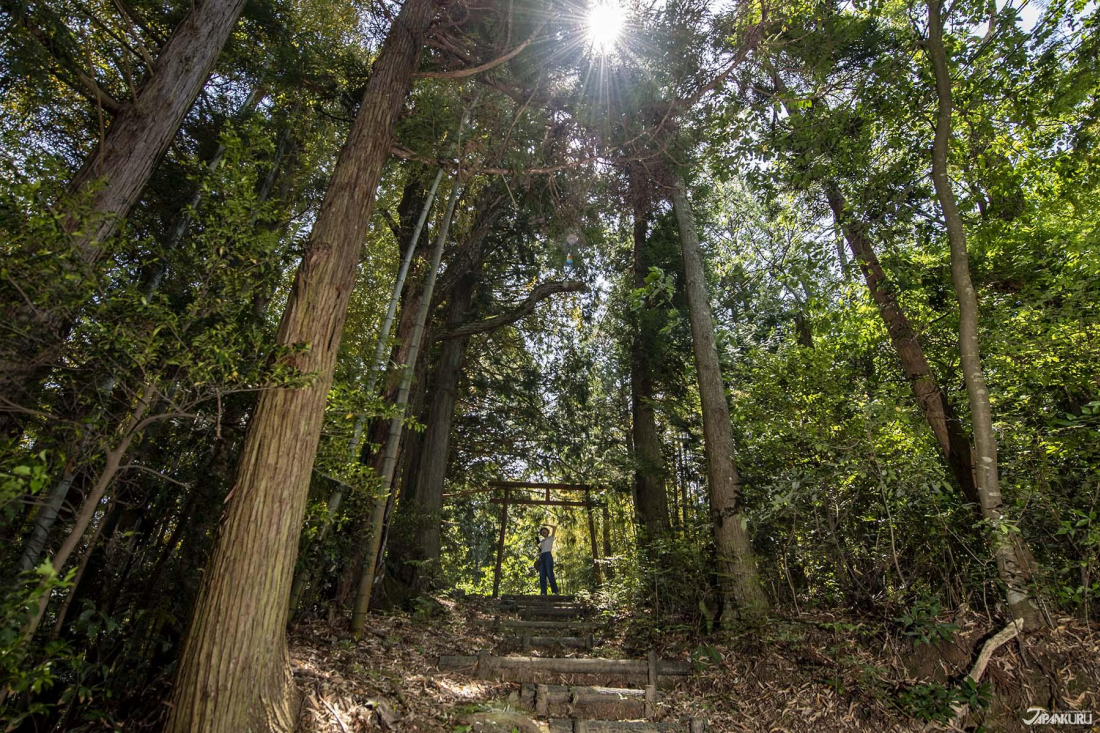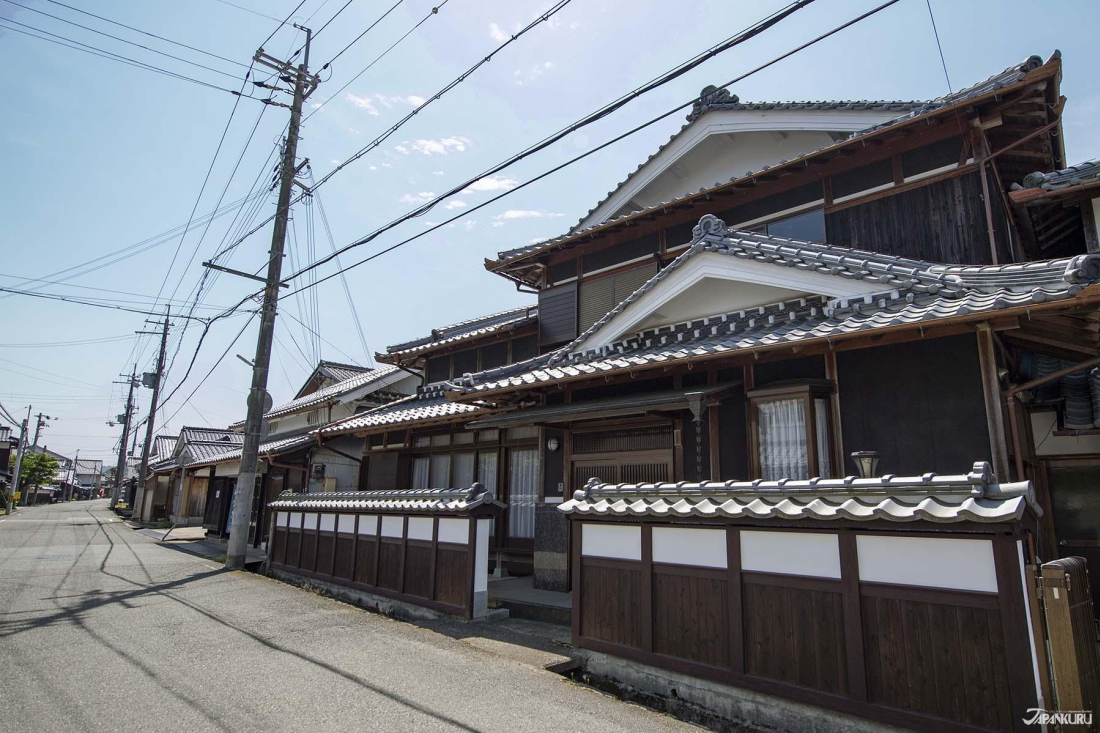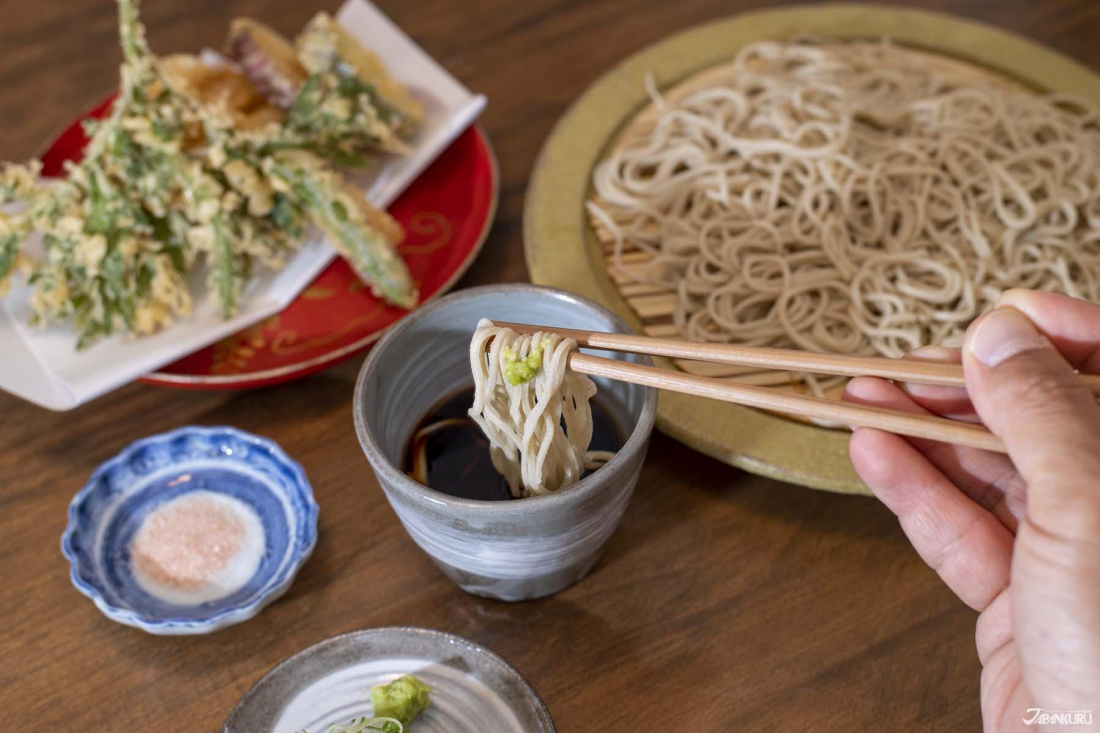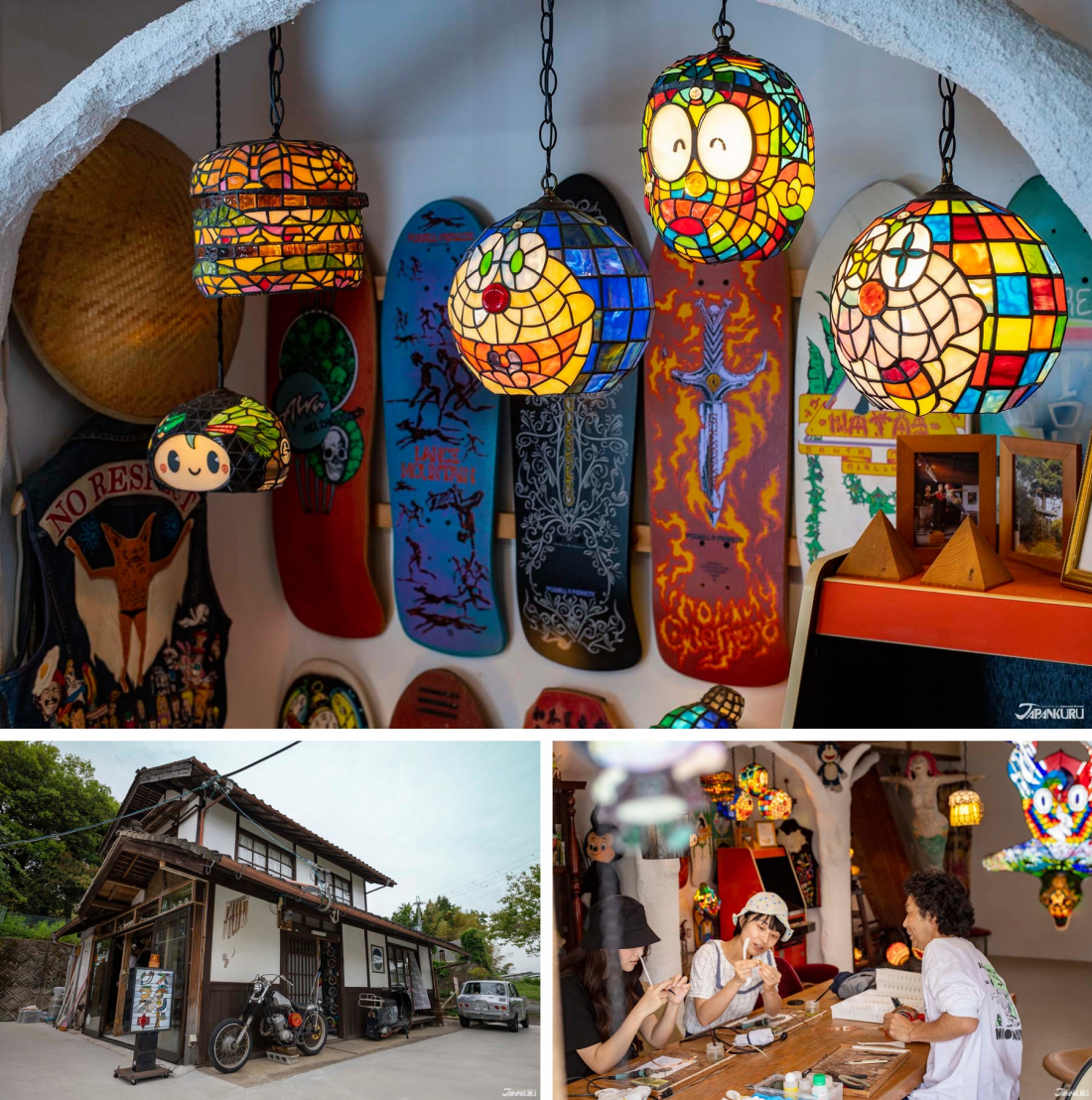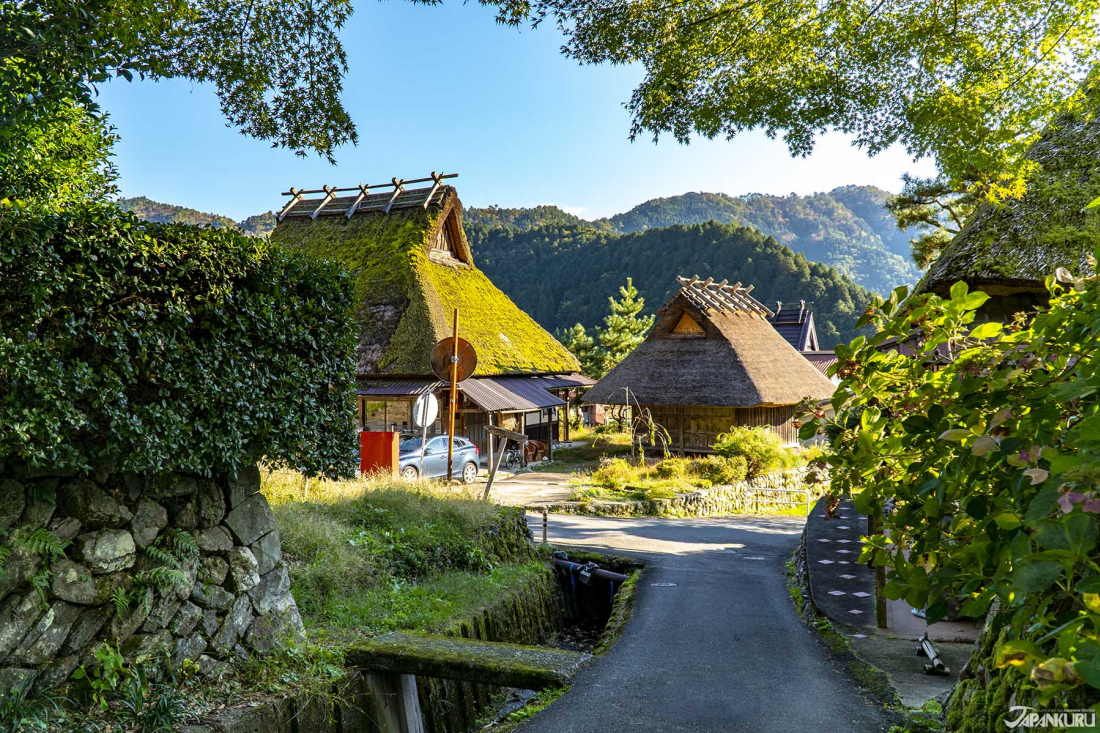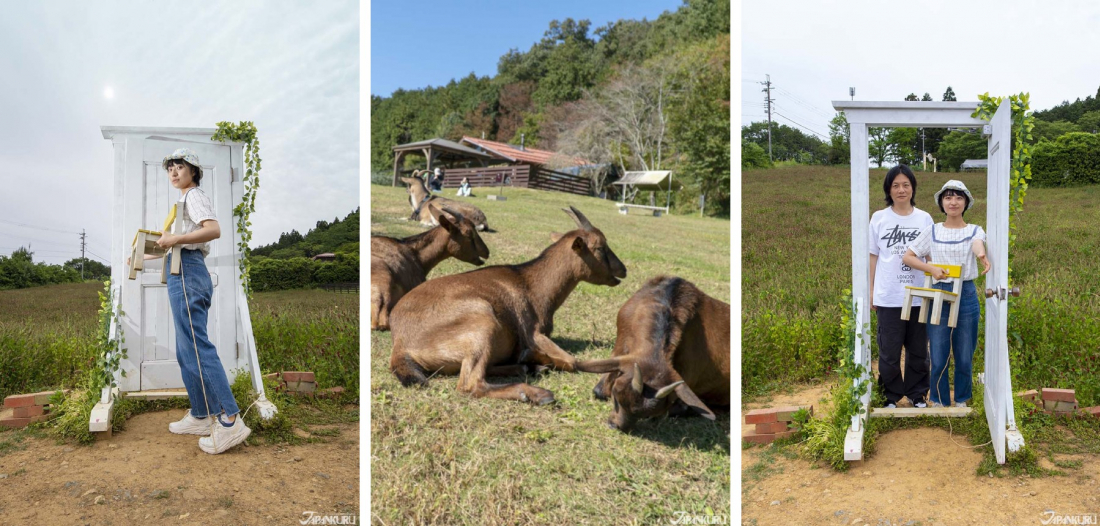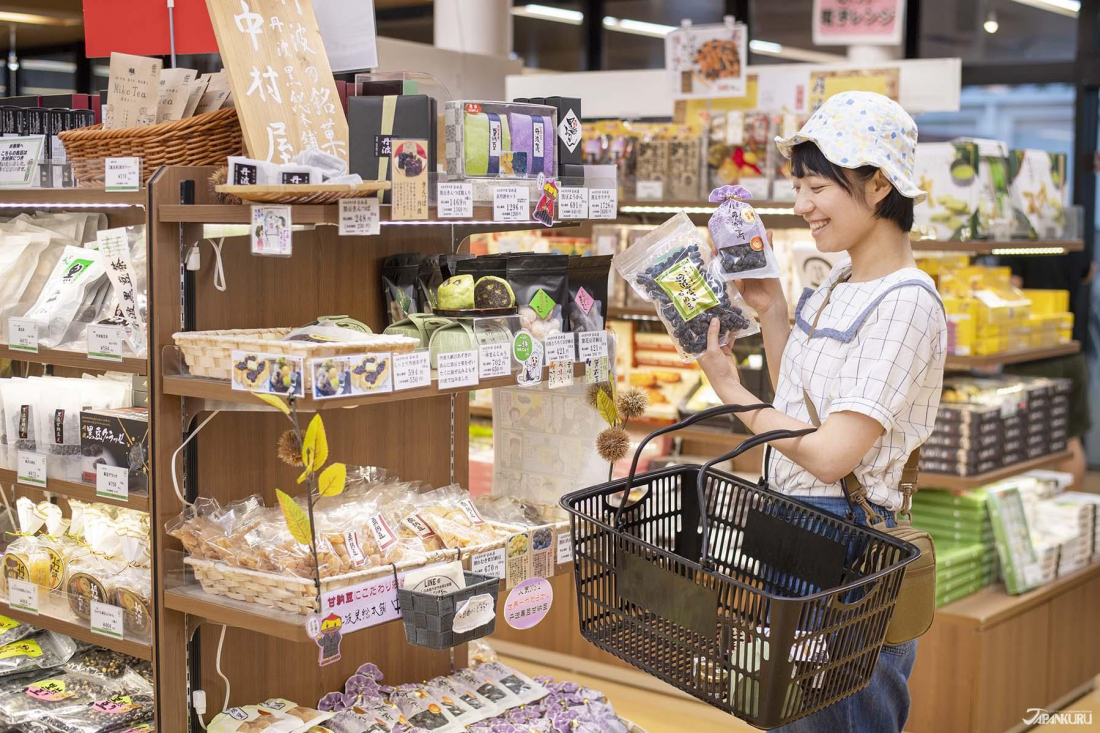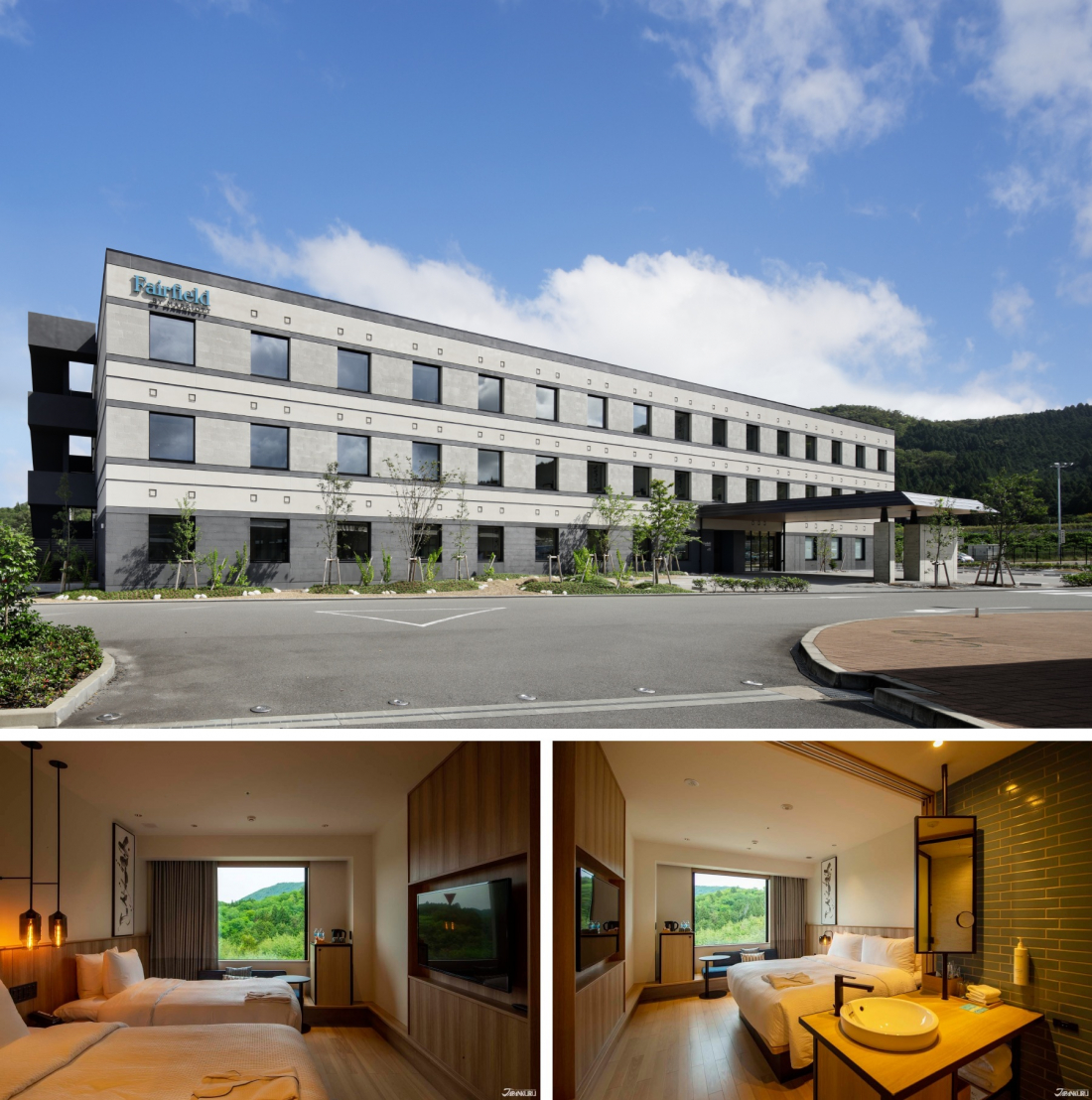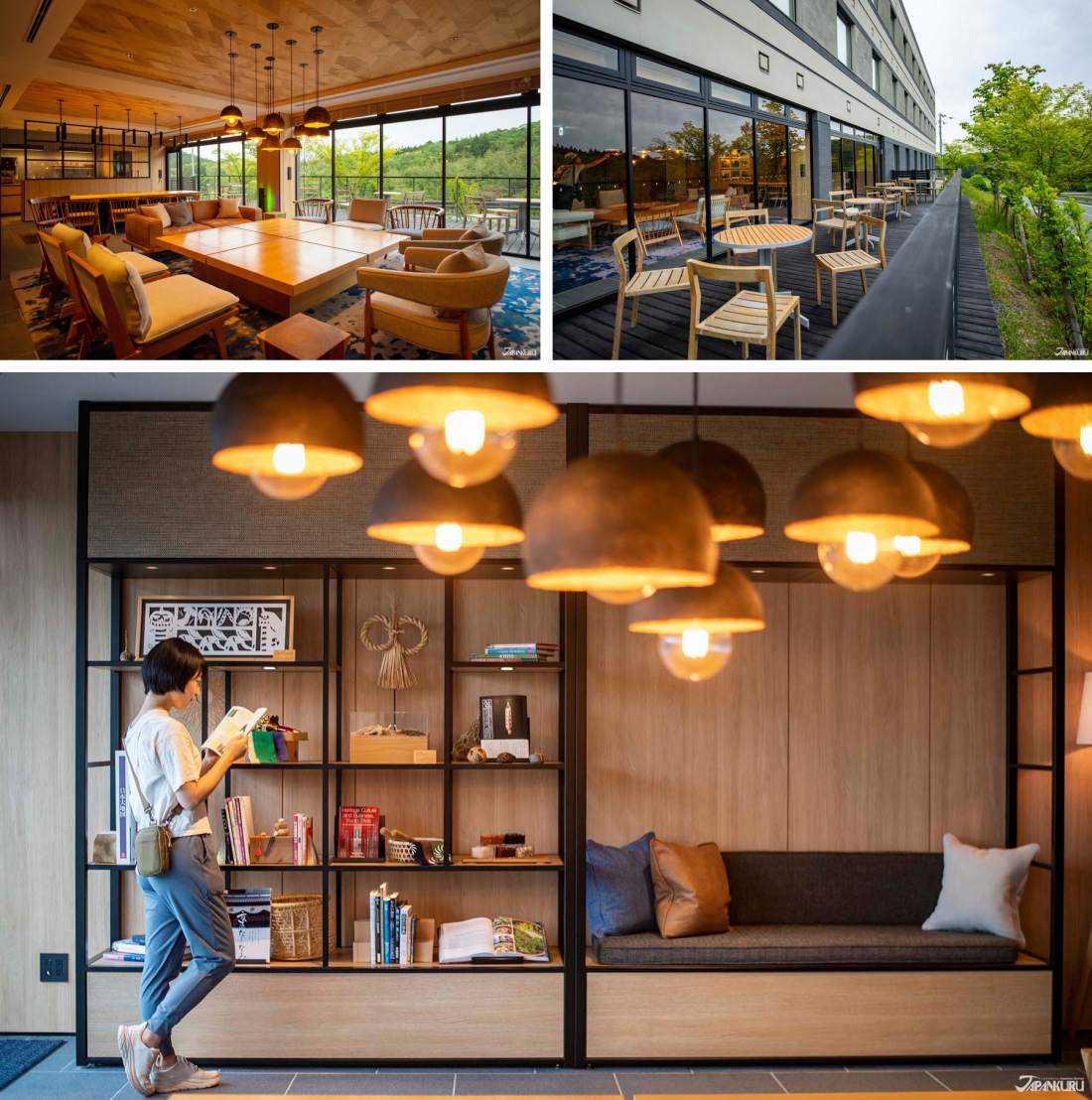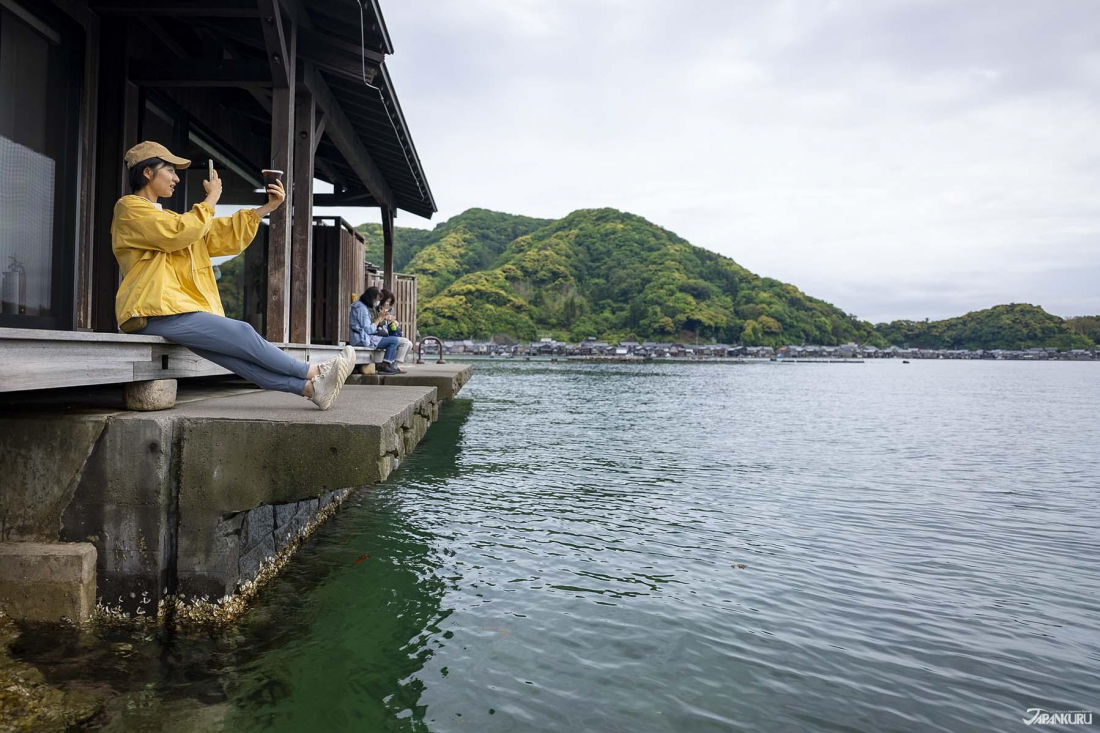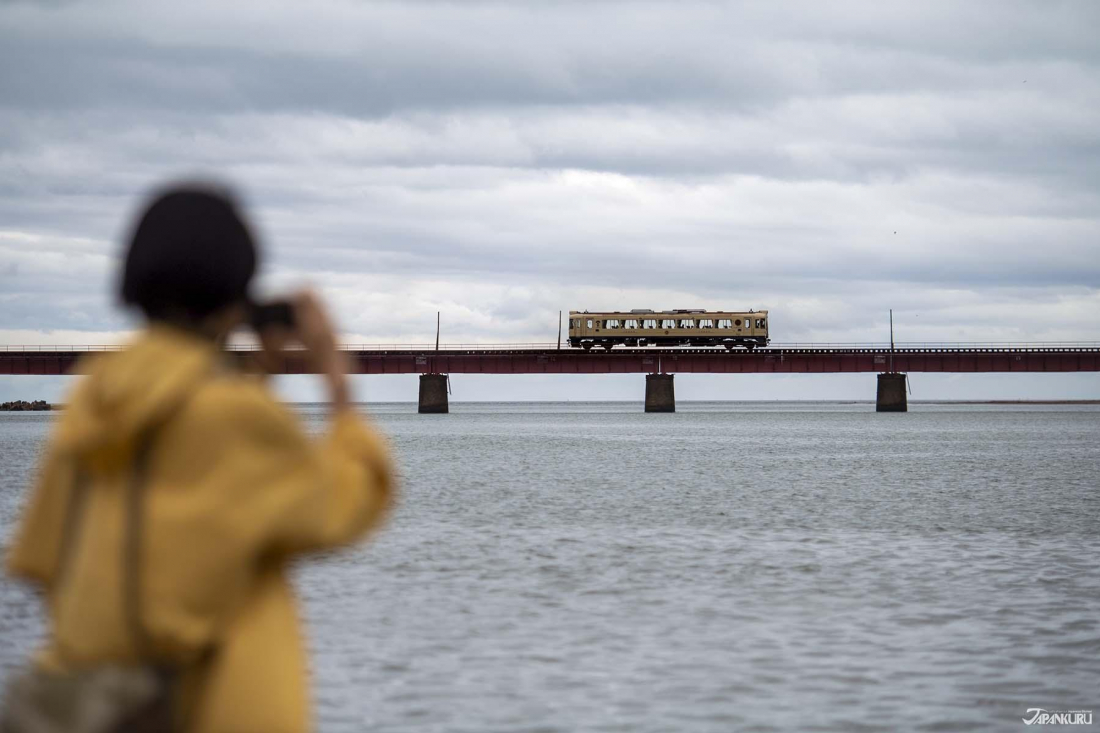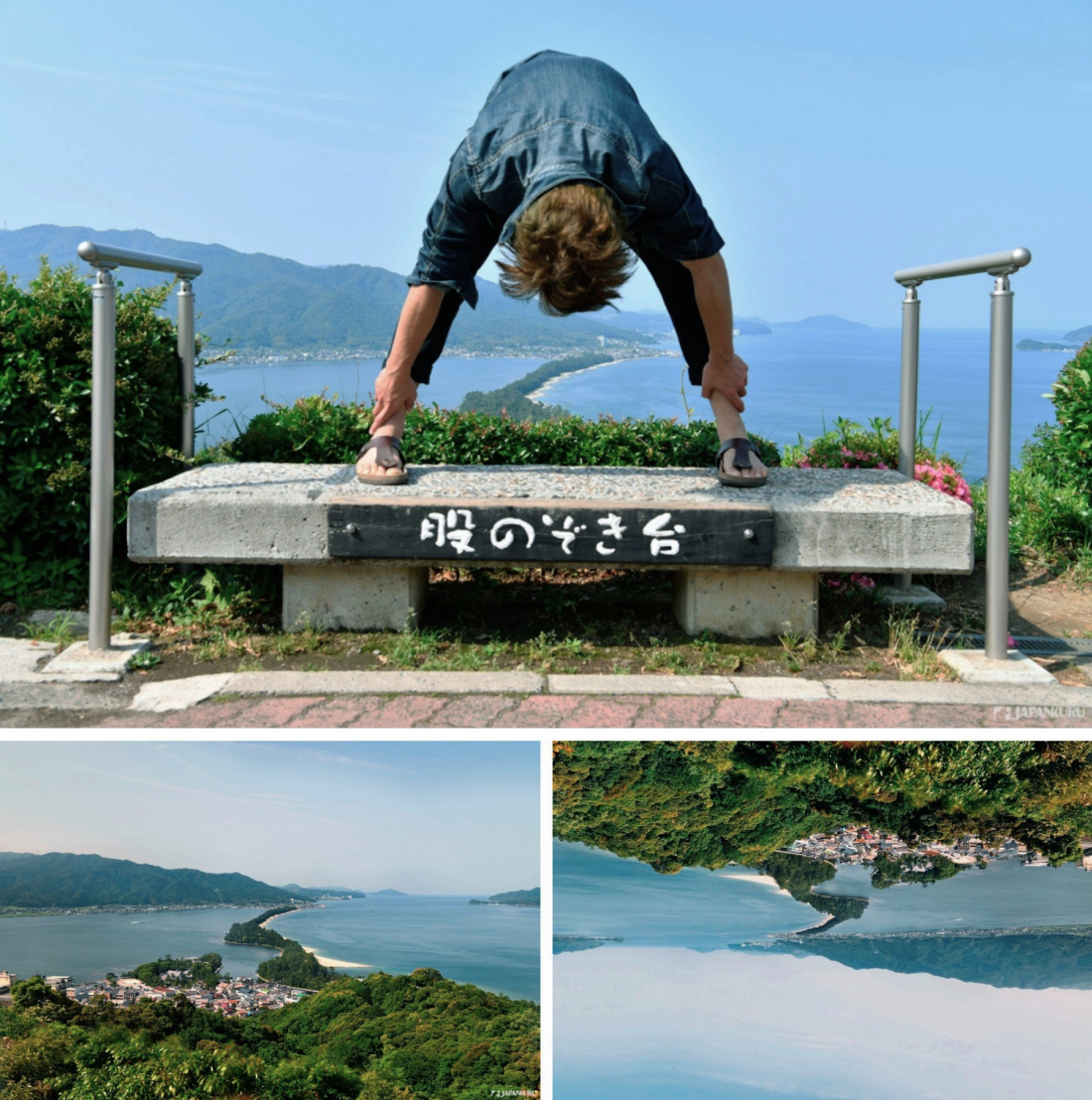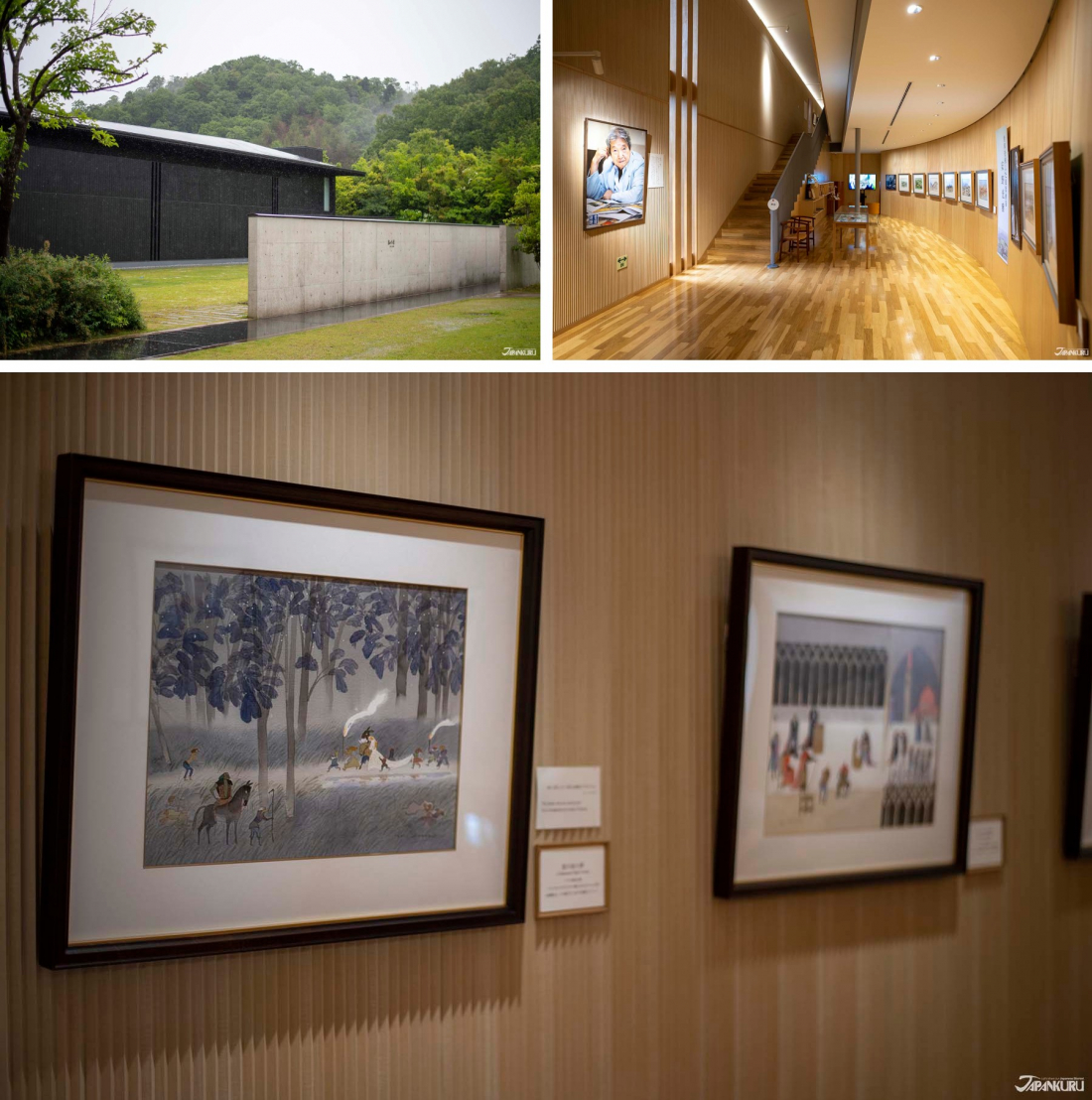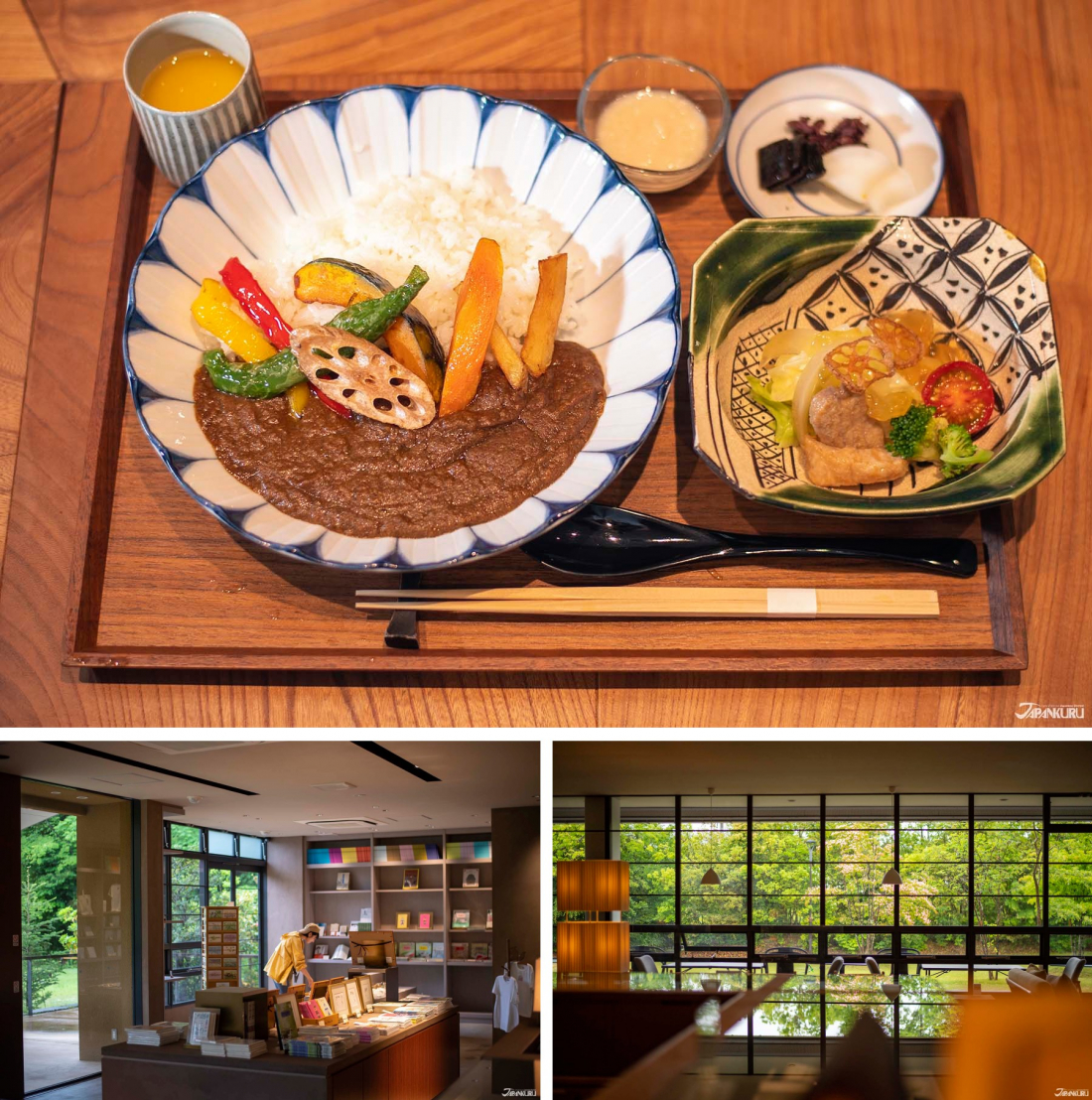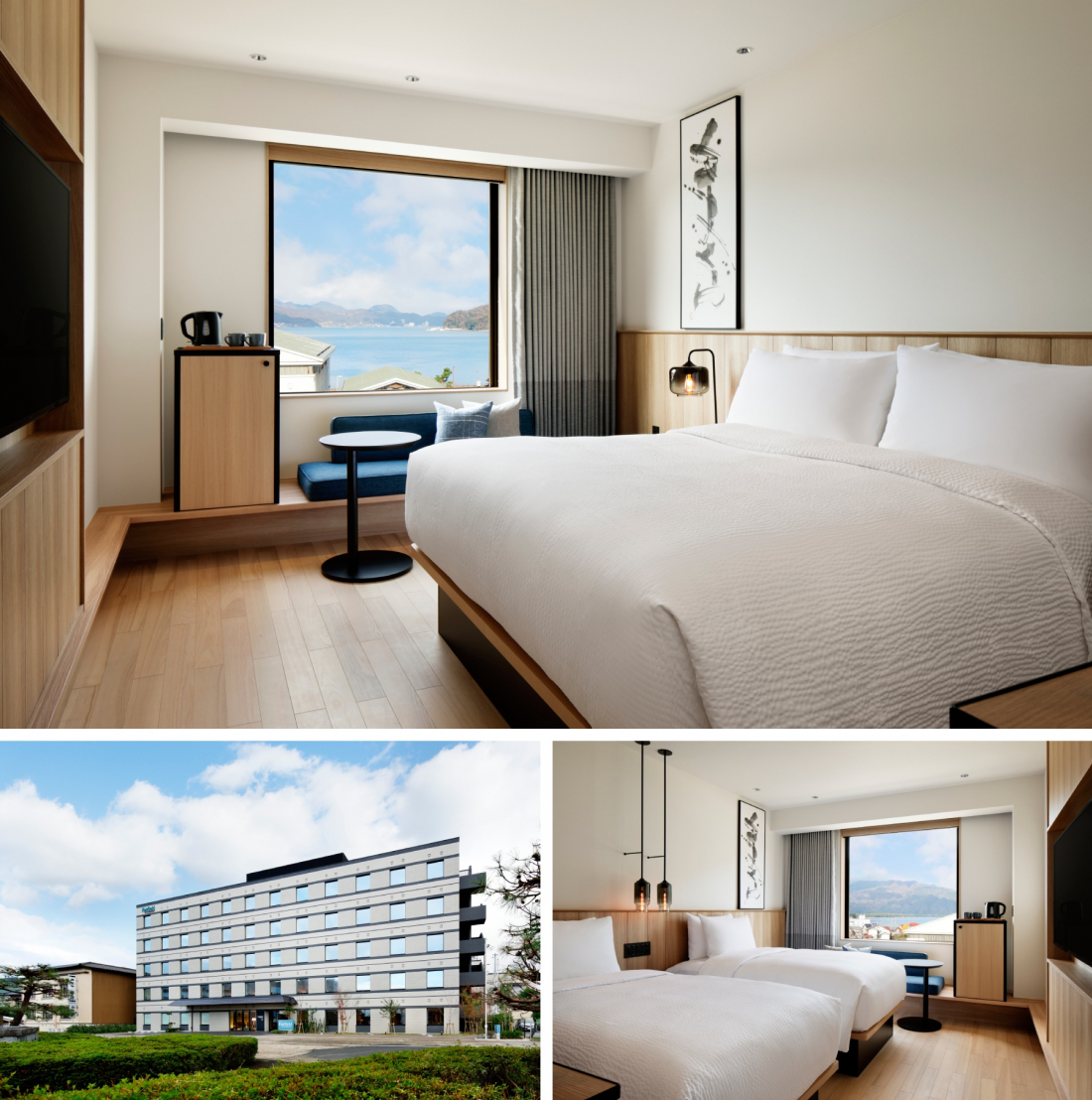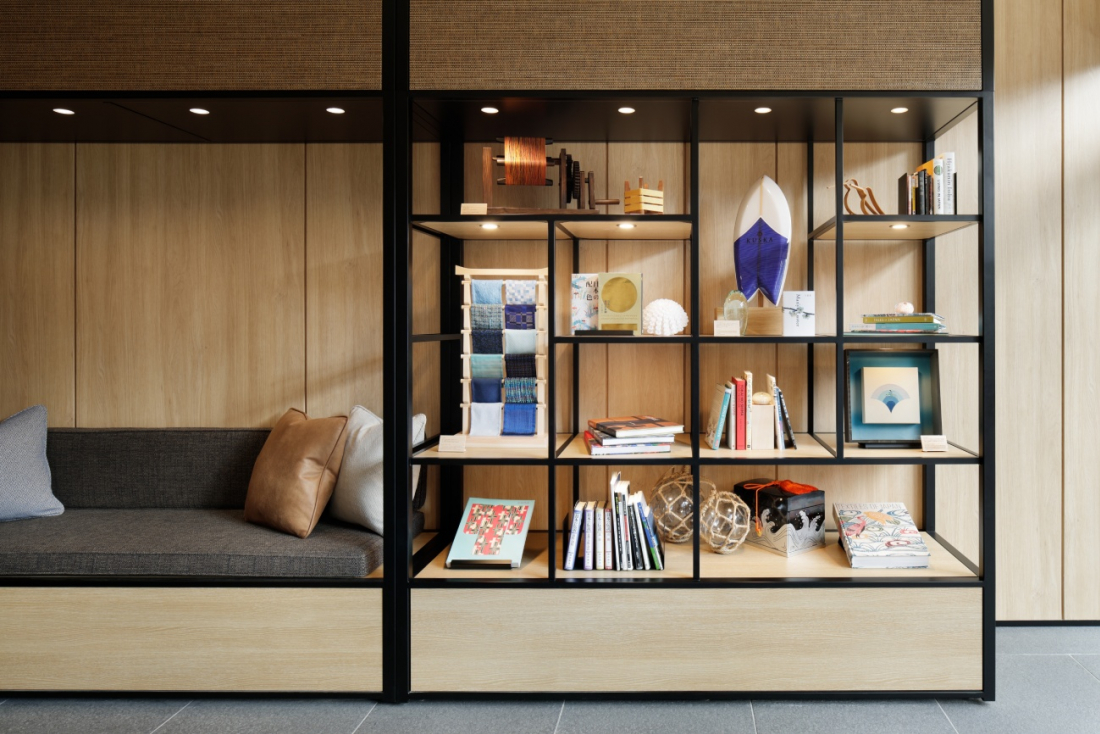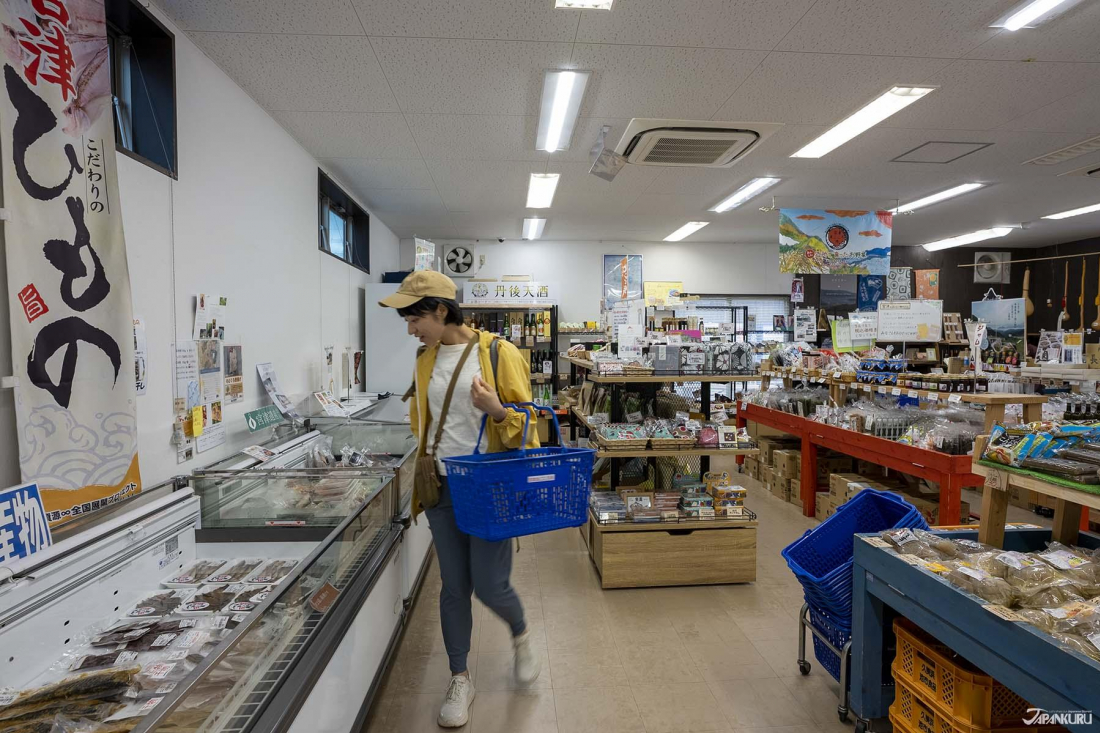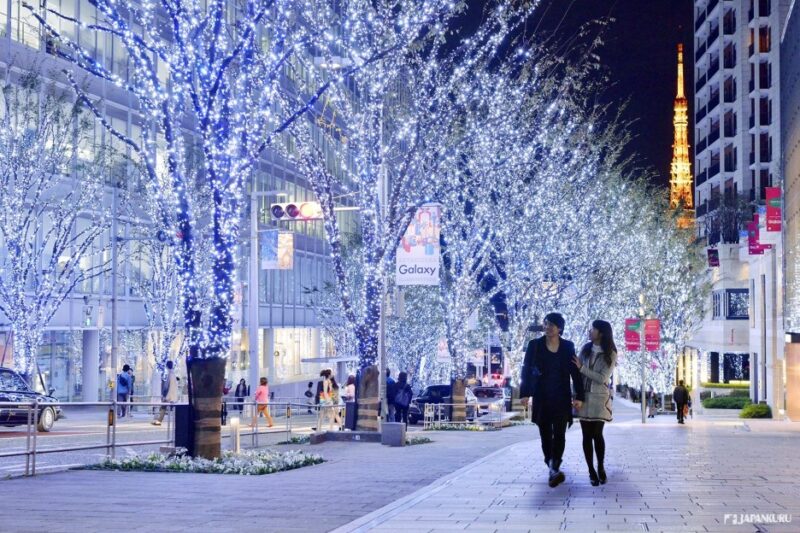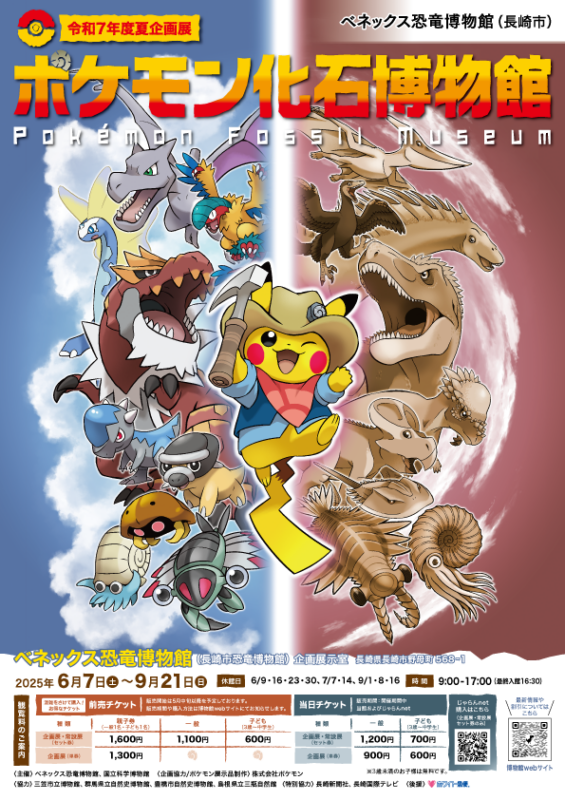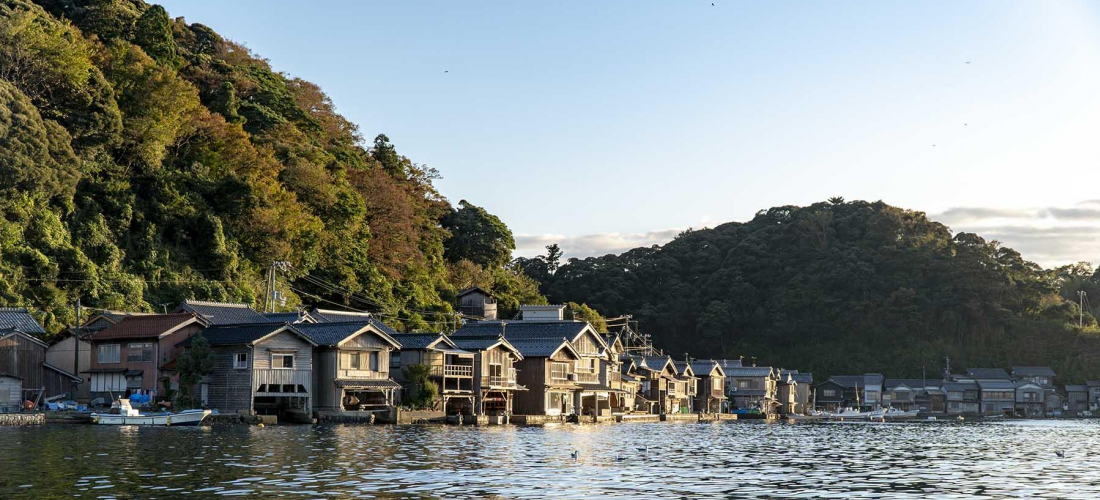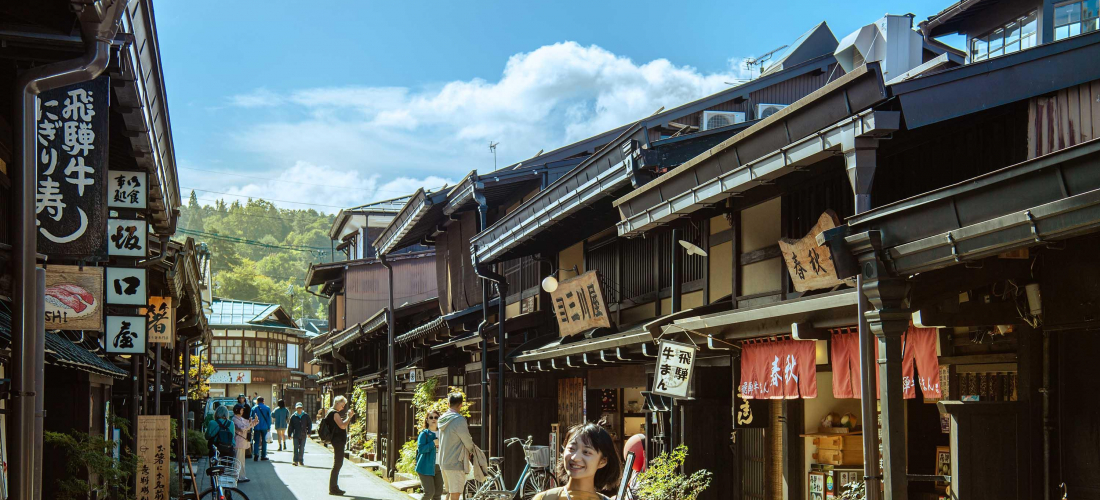
See Kyoto’s best hidden gems and most relaxing getaway areas with this guide to Kyoto road-tripping!
CONTENTS
A Roadtrip Through Rural Japan
Kyoto is a treasure trove of Japanese traditions, historic destinations, and beautiful vistas, but most sightseers only get to see a tiny portion of everything Kyoto Prefecture has to offer. In fact, the Kyoto City metropolitan area consistently attracts such overwhelming crowds that the local government has to tackle overtourism issues, and yet, the green mountains and distant seashore of rural Kyoto are still largely unexplored by foreign visitors in Japan. Part of that is a matter of convenience, especially for those deadset on exploring Japan by train. But a rising trend in car rentals among tourists reveals an inevitable truth: Japan's gorgeous countryside is best explored by car, and it's worth renting a car to see all Japan has to offer. Even in a country with fantastic public transportation, a road trip through the backroads of Kyoto opens up a whole new world of beautiful nature, fascinating traditions, local innovations, and some of the best food you're likely to eat while in Japan. Plus, Japan's network of "Michi no Eki" (道の駅) or "Road Station" roadside rest stops offer a convenient glance at each local community along the route. Some of them even have comfortable and convenient accommodations attached thanks to the Fairfield by Marriott chain of hotels, making it easy to explore Kyoto even off the beaten path.
Ancient shrines, quaint seaside villages, restaurants supplied by local farms, museums, one of Japan's "Top 3 Scenic Views," and so much more – you won't want to miss this road trip through Kyoto!
Day 1: To the Mountains of Tamba
This road trip starts from the city of Kyoto, although our 2-day 2-night plan doesn't include any of the city's famous sights. (For that, you'll have to check out other Kyoto guides.) The choice to start in the city is just one of convenience – the area around Kyoto Station in particular is easy to get to, and easy to rent a car in! But to really start our trip, we'll be heading northwest straight out of the city, into the mountains and towards the Tamba region (丹波, sometimes "Tanba") of central Kyoto. While Kyoto's metropolitan area is a place of artfully preserved history and complex tradition, the rural Kyoto of the Tanba area (also called "Kyotamba") has its own air of down-home authenticity. Tiny roadside shrines look like they haven't been touched in 100 years, and shop staff will tell you "those buckwheat fields you saw down the street? My family has been working that land for generations." When it comes to food, there's particular pride, with locals ready to tell you about the delicious local ingredients that come from the mountains and fields, from chestnuts to wild boar. Just about all of Japan's countryside suffers from an aging population and young people running for the big city, but the communities created by those who stick around have such passion for where they live, you feel it everywhere you go. Getting out of the big city and heading to an area like Tamba is a vital part of enjoying all the hidden treasures tucked away in small pockets of Japan.
The Edo Streets of Fukusumi
Despite being a "Kyoto Road Trip," the first day of this itinerary actually starts with a hop just over the prefectural border, into Hyogo Prefecture and the small historic enclave of Fukusumi. Once a rest stop on the busy road between Sasayama Castle and Japan's ancient Kyoto capital, the small community of Fukusumi grew prosperous thanks to the many travelers passing through on their own samurai "road trips" in the Edo era (1603-1868). For modern-day visitors who see the sleepy little village that still stands along the historic road, the hustle and bustle that once occupied Fukusumi might seem like a distant daydream, but the beautiful old houses and ancient landmarks make it easy to imagine what the area was once like.
Locals recommend a trip down the main road starting with a look at the Yasuda Giant Cedar, an enormous 33m-tall 800-year-old tree that covers the grounds of a small local shrine (Kifune Shrine/貴船神社). Despite standing apart from the wooded mountains on all sides, this one tree is said to look like a forest all on its own when viewed from a distance, earning it the name "the Jinshichi Forest." Next comes the Sanbaya Higuchi house (さんば家ひぐち), a beautiful 400-year-old example of traditional Japanese architecture that once belonged to Fukusumi's resident midwife, but now functions as a sort of community center. Then, a little further down the street, don't miss a look at the former site of Fukusumi Station. Once the final stop on the now-defunct Sasayama Line, the station played a key role in the local mining industry during the mid-20th century, ferrying manganese and silica around the region. Now, all that remains is the station's old stone signpost, and the remnants of train tracks nearby!
Ready for a little break? Get your morning coffee in Fukusumi at Magnum Coffee, a coffee shop nestled in among the historic buildings, specializing in organic beans roasted on-site. On sunny days, the deck offers a great place to relax with a refreshing iced coffee, and inside seating is made up of an eclectic variety of retro furniture and rough-hewn wooden benches. After your coffee break, head down the road and turn right for a glimpse of "Mount Funaoka" (船岡山), a hill that seems to sit in the middle of the flat rice paddies like a giant "ohmu" from Studio Ghibli's Nausicaa of the Valley of the Wind. Head up the steep stone stairs to the top of the tree-covered "mountain," and you'll really feel like you've entered the world of Ghibli when you see Maruyama Inari Shrine (丸山稲荷神社), with red torii shrine gates that glow under the sunlight in the small forest clearing. Truly magical.
Fukusumi Area (福住地区)
Walking Route on Google Maps
Official Website (jp)
Magnum Coffee
317 Fukusumi, Tamba-Sasayama, Hyogo
Hours: weekdays 10:00 – 18:00 | weekends 8:00 – 18:00
Official Website (jp)
Soba Lunch at Welcome Ueno Motoshiro
For lunch we're back in Kyoto for a taste of "Tamba soba" at Welcome Ueno Motoshiro, a restaurant named for the castle that once occupied the space where the restaurant now stands. This cozy little eatery is full of light thanks to tall windows taking up most of one wall, looking out over the lowlands below. A great view for diners, and even better for the samurai who ran a castle on this land in centuries past! Try the chilled soba noodles with tempura (tempura zaru-soba/天ぷらざるそば) for a true taste of Tamba flavor. The soba noodles are made with local buckwheat ground fresh each day, especially delicious thanks to the region's warm days and cool evenings, and they come served with freshly-fried tempura made with whatever seasonal vegetables local farmers are currently harvesting.
Welcome Ueno Motoshiro (ウエルカム上野 もとしろ)
Minamigaichi-23-1 Ueno, Kyotamba, Funai District, Kyoto
Hours: 11:00 – 16:00 (closed Tuesday/Wednesday)
Official Website (jp)
The Former Shitsumi Elementary School
Back when you were in grade school, do you remember the frustrating feeling when lunchtime was over and you had to get back to classes? Did you ever think you might look forward to school after lunch? This next destination might be your chance, because the Former Shitsumi Elementary School is permanently out for summer, and it's been transformed into spaces for local businesses instead! The school closed at the end of the school year in 2011, when trying to make the old building meet modern school standards became too much of a struggle, but the local community rebelled when it came time for this symbol of their community to be demolished. Instead, the old classrooms were turned into a variety of businesses: a picture book store with a space for kids to read, a coffee shop, a little Italian restaurant, a shop selling okaki rice crackers and other traditional Japanese snacks, a cafe set up in the old school lunchroom, among others. The pure nostalgia of the classrooms is worth a visit all on its own, but fans of the school-centric anime series will especially enjoy the chance to see a real Japanese school for themselves! (It's a great place for cosplay enthusiasts to take some unique photos, too.)
For those of us whose fondest memories of grade school are all from arts and crafts time, however, our next destination is the perfect after-school activity!
Former Shitsumi Elementary School (旧質美小学校)
Ueno-43 Shitsumi, Kyotamba, Funai District, Kyoto
Hours vary, see the official website for details.
Official Website (jp)
Stained Glass at Jahpon Land
If you think stained glass only belongs in church windows and fancy lampshades, this next spot will be sure to change your mind. Jahpon Land is run by Pucci and Sippo, who have been making stained glass work for 30 and almost 20 years respectively, and their work is full of lively colors and fun motifs, including pop culture references like Mario and Mickey Mouse. Their rural Kyoto studio is a passion project for the family, constructed by hand and beautified over the course of a decade, as they filled it with decorative stained glass additions and various pieces available for sale. Visitors can not only purchase the artists' work when visiting the studio, but also try stained glass for themselves, with easy workshops lasting somewhere between an hour and a half and four hours. Make your own bird, rainbow, or balloon-shaped ornament, or try putting together a cute cake-shaped candle holder from little glass pieces in a variety of colors. The workshops are fun for participants of all ages (younger children will need some adult help), and Pucci and Sippo are patient teachers with a clear passion for their work. If you fall in love with their stained glass after your workshop, you can always order some custom pieces! Some of their most popular items include cute three-dimensional cat-shaped lamps (which can be made to match your own pet kitty for 100,000 yen and up), and totally ingenious nameplates where they cleverly combine the meaning of your name with the shape of the letters.
Jahpon Land
Hinokiyama-89 Hashizume, Kyotamba, Funai District, Kyoto
Official Website (jp)
*Contact them through the official website to schedule a workshop!
A Village of Thatched Roofs in Miyama
Miyama Kayabuki-no-Sato is far enough off the beaten path that it might be a matter of choosing either Miyama or some of the other spots on this Kyoto road trip route. But if you've ever wanted to see what Kyoto's countryside looked like in centuries past, this is the place to do it. Miyama is a functional village with real residents living their everyday lives, in houses that happen to be hundreds of years old, which give the village the name "Kayabuki-no-Sato" (かやぶきの里/thatched village). It's not a museum, but the expertly preserved architecture has turned the small community into a sightseeing destination, and travelers come throughout the year to walk the narrow lanes and admire the fantastic scenery. Check out Miyama's famous soft-serve ice cream if you make the detour to this unique spot!
Miyama Kayabuki-no-Sato (美山 かやぶきの里)
Miyamachokita, Nantan, Kyoto
Official Website (jp)
Becoming Suzume at Ayabe Fureai Bokujo Ranch
Ready for one last excursion for the day? Your visit to Ayabe Fureai Bokujo Ranch can be quick or rather leisurely depending on what you hope to see there. The ranch has its own restaurant that serves local specialties like Japanese venison stew, and the surrounding grassy hills are populated with goats and rabbit hutches, set up as something along the lines of a petting zoo. But the most exciting new addition to the Ayabe Fureai Bokujo Ranch is their iconic new door, modeled off the doors from the popular new Makoto Shinkai animated movie Suzume. Like Your Name and Weathering With You before it, Suzume has been a massive hit in Japan, and fans all over the world have been looking for ways to imitate the movie's poster with its door to a mystical underworld. The door at Ayabe Fureai Bokujo Ranch is set up in front of a field of tall grass, standing without a wall (as in the poster), equipped with a small chair to stand in for Sota. Fans of the movie won't want to miss this chance to recreate their favorite scenes, standing solemnly like the posters, or pretending to push the door shut before a giant worm escapes!
Ayabe Fureai Bokujo Ranch (綾部ふれあい牧場)
Hinokimae-81 Idencho, Ayabe, Kyoto
Official Website (jp)
Dinner and Souvenirs at Road Station Kyotamba Ajimu-no-Sato
After a long day exploring the Tamba region, it's time to do some shopping and eating before turning in, which means it's about time we head to our first road station rest stop! Road Station Kyotamba Ajimu-no-Sato has a huge shopping area (the Kyotamba Marché) including shelves lined with souvenirs of all kinds (although the vast majority of options are food). It's tradition in Japan to bring home souvenirs in the form of small snacks or sweets, and Tamba is known for being rich with the bounty of the local mountains: not just buckwheat, but also nuts, mushrooms, dairy, game meat, and especially black soybeans – a real local specialty. As a result, some of the most popular options at Road Station Kyotamba Ajimu-no-Sato are locally-made snacks like roast black soybeans and traditional dorayaki stuffed with chestnuts!
Travelers can also try a taste of Tamba at the rest stop's restaurants, including the local eatery Bonchi. The menu is focused on local ingredients, and diners can enjoy their meals while looking out at the mountain scenery. Just about every option includes black soybeans in one form or another! The Black Soybean Variety Meal (黒豆づくし) has the most of all, with black soybean rice, preserved black soybeans, and black soybeans in the salad, etc. Now that's black soybean heaven.
Road Station Kyotamba Ajimu-no-Sato (道の駅 京丹波味夢の里)
65-1 Sonefukashino, Kyotamba-cho, Funai District, Kyoto
Kyotamba Marché Hours: 6:00 – 21:00
Bonchi Hours: 11:00 – 20:00
Official Website (jp)
Night 1: Fairfield by Marriott Kyoto Kyotamba
Just about 10 meters from the road station, the extremely conveniently located Fairfield by Marriott Kyoto Kyotamba is the perfect place to rest your head for the night after a day driving to and fro through the mountains of Kyoto. From the first-floor seating area to the simple and spacious king and twin guestrooms, the hotel has a modern airy feel and the kind of comfortable furnishings that are both stylish and extremely inviting for tired hotel guests. And being located just a little way off the road in the Kyoto mountains, the views from the Fairfield windows include tranquil scenes of green hillsides and tall trees. All of the rooms come with sofa benches, but before drifting off to sleep between the soft mattresses and fluffy duvets, the best place for relaxation is the lobby lounge.
The Fairfield by Marriott lobby lounge feels less like a lobby and more like a cross between a cafe and a cozy living room, with comfortable armchairs around one big coffee table, a dining table practical for eating or getting some work done on a laptop, a deck with seating for enjoying good weather, and even a little "community counter" with hot drinks, a toaster, and a microwave. When you don't feel like walking over to the Road Station, there's a small shop space called "The Market" with more local snacks and drinks as well. This lounge space is where the local beauty of Tamba really shines through, thanks to shelves decorated with local crafts and books on Japanese culture (in Japanese and in English), alongside photos on the wall featuring some lesser-known local sights. Chat with the staff at the front desk for even more neighborhood secrets, like the juicy revelation that Japanese pop sensation Takuya Kimura filmed scenes for his latest big-screen production at the nearby Shitsumi Hachimangu Shrine!
Before heading out in the morning, don't miss breakfast at the hotel! Fairfield by Marriott Michi-no-Eki hotels don't have breakfast buffets, but at the Kyoto Kyotamba location – an area known for fantastic food – it only makes sense that you can reserve a breakfast box ahead of time. These traditional Japanese breakfasts are actually made at Bonchi next-door, so even if you skip out on dinner at the restaurant, you can try the black soybean rice in the morning! The hotel's little kitchen even has instant miso soup alongside the tea and coffee. Stomach full with a real balanced breakfast, Japanese style, you'll be all ready to venture out to Kyoto's northern reaches.
Fairfield by Marriott Kyoto Kyotamba (フェアフィールド・バイ・マリオット 京都京丹波)
67 Sonefukashino, Kyotamba-Cho, Funai District, Kyoto
Check-in/Check-out: 15:00/11:00
Official Website (en) | Reservations
Day 2: North to the Kyotango Seaside and Amanohashidate
Despite being the ancient capital of an island nation, only the short northern border of Kyoto Prefecture has any contact with the sea, which is why Kyoto might be the last place to come to mind when discussing seaside destinations in Japan. But "Kyoto by the Sea" is a surprisingly popular region among domestic sightseers in the know, driving travelers to visit spots throughout the northern-Kyoto region of Kyotango. It's not about sandy beaches and swimsuits – it's about breathtaking seaside vistas, dramatic rocky cliffs, and even one of the "Three Views of Japan" established in the 1600s. For beauty both natural and man-made, the Kyotango area has it all, from scenic views to art museums and elegant architecture.
The Ao-Matsu Train Car
After arriving within view of the Kyoto seashore, the second day of this road trip will start with the Kyoto Tango Railway (AKA Tantetsu), in order to view the Ao-Matsu train car from the outside in. The Kyoto Tango Railway runs a handful of routes through the Kyotango region with a variety of trains on the tracks, but we're here to see one in particular: the Ao-Matsu sightseeing train. Designed by award-winning industrial designer Eiji Mitooka, known for his railway work all over Japan, these trains look more like stylish living spaces than any train you've been on before thanks to some unexpected design choices. Standard seating is supplemented with sleek sofas and high counters, kiosks on the train sell drinks and snacks to be enjoyed while admiring the view of the Japanese coast, and it all comes together thanks to the retro Japanese design concept expressed throughout the train cars. The pale wood and blue designs are modeled after the white sand and blue-green pine trees of northern Kyoto!
Before getting on the train, however, you might want to stop the car a little way upstream from the Yura River Bridge (由良川橋梁). The unique alignment of the railway bridge and the Sea of Japan beyond makes it a fantastic spot for snapshots of the Kyoto Tango Railway, with some fans of the spot comparing the view to the scenes in Ghibli's Spirited Away, when the train runs through a shallow sea. From there, you can drive over to Tango-Yura Station to spend some time on the unique sightseeing train, enjoying the view and the atmosphere. Passengers can ride the Ao-Matsu for the same price as any train ride on the Kyoto Tango Railway (there's no extra fee or reservations required), but it only runs a few times a day, so make sure you check the schedule first.
Kyoto Tango Railway's Ao-Matsu Sightseeing Train (京都丹後鉄道の丹後あおまつ号)
Tango-Yura Station: Yura, Miyazu, Kyoto
Yura River Bridge: Yuragawabashi, Oki, Fukuchiyama, Kyoto
Ao-Matsu Official Website (jp)
Amanohashidate
It's still early in the day, but our next stop is the star destination for this part of Kyoto: Amanohashidate. Amanohashidate (天橋立) is a long, thin sandbar of brilliant white sand covered with thick groves of green pine trees that reaches far into Kyoto's Miyazu Bay, and the natural beauty is so widely agreed upon in Japan that legends refer to it as a rung in the ladder to the heavens built by Japan's gods. Even the name Amanohashidate implies its status as a bridge to heaven! Perhaps that's why it was established as one of the "Three Views of Japan" back in the 1600s (alongside Matsushima in Sendai and Itsukushima Shrine in Hiroshima), still generally believed to be the three most beautiful spots in the country.
Visitors can make their way down to the beach and walk along the sandbar if they want, but the scenery is most popularly viewed from high above. Hop on the chairlift up to Amanohashidate Viewland to see the sandbar from its best angle, and join in on the crowds engaging in "matanozoki" (股覗き). It's tradition to bend over and look at Amanohashide upside down from between your knees, which makes the jagged shape of the sand look like a dragon flying into the sky. Then again, with all the blood flowing to your head, it might be hard to tell what direction the dragon is flying in after all.
Amanohashidate Viewland (天橋立ビューランド)
Monju, Miyazu, Kyoto
Hours vary throughout the year, check the official website here.
Official Website (jp)
Admiring Art at Wakuden no Mori
After the natural splendor of Amanohashidate, the rest of our plans in Kyotango are dedicated to the wonders that humans have brought to the region, starting with an art museum that both kids and adults can enjoy! The Wakuden no Mori museum is dedicated to the work of Mitsumasa Anno, an award-winning illustrator and watercolor painter best known around the world for his children's books like "Mysterious Pictures" and the "Journey" series. Between Anno's clever, light-hearted style, the general lack of words in his books, and his ability to tell full stories on individual canvases with small, detailed characters, it's no surprise that the artist's work has gained recognition at home and abroad! The museum walls display dozens of Anno's pieces, and the archives contain even more, leading the curators to entirely rearrange the museum and switch out art for new exhibitions about once every three months. And all of this is housed within a stylish building designed by Japanese architect Tadao Ando.
Next to the museum, Studio Restaurant Wakuden Mori is an almost shockingly chic addition to the museum experience, offering cafe choices and high-end cuisine made (of course) with local Kyoto ingredients. Whether you order the curry made with duck and Kyotango vegetables, the sushi rice topped with Kyoto beef, or the lemon and gorgonzola pizza, the combination of local ingredients and talented chefs means you really can't go wrong. After your meal, sip the homegrown mulberry leaf tea and enjoy the relaxing atmosphere.
Wakuden no Mori (和久傳ノ森)
764 Kumihamachotani, Kyotango, Kyoto
Hours: museum 9:30 – 17:00 | restaurant 10:00 – 18:00 (both closed Tuesday)
Official Website (jp)
Coffee and Cake in Ine
For a peaceful afternoon by the sea, drive to the northeastern tip of Kyoto where it pokes up into the Sea of Japan, and spend the rest of the day in Ine. This tiny seaside town was once a fishing community, each household equipped with boats ready to take out onto the water at a moment's notice. These days the traditional fishing culture has been replaced with larger commercial ventures and tourism, but history has left its mark on the architecture! Ine is known for old-fashioned houses called funaya (舟屋), which are built hanging right off the edge of the coastline, so that boats could be anchored under the living quarters while in the water. The shores of Ine Bay are still lined with these beautiful houses, officially earning Ine the title of one of the "Most Beautiful Villages in Japan," and making it a must-see for travelers in northern Kyoto.
To really enjoy your visit, stop by Ine Cafe for drinks and sweets with a view. Like so many of the buildings in Ine, the cafe is perched precariously over the edge of the water, and the windows look out onto the beautiful village lined up around the bay. Don't worry if you can't snag a window seat – cafe staff don't generally mind if you switch tables when a better one opens, and the wooden deck offers a place to hang out right next to the water. Plus, there's a designated table by the window that's only for picture-taking!
Stick around for dinner in Ine for fresh seafood rice bowls, offered at restaurants all around the village!
Ine Cafe
539-1 Hirata, Ine, Yoza District, Kyoto
Hours: 11:00 – 17:00 (may vary by season)
Official Website (jp)
Night 2: Fairfield by Marriott Kyoto Amanohashidate
Even when spending so much time relaxing by the sea, after a long day of road tripping through Kyoto you'll be ready for a peaceful place to rest for the night. Luckily, Fairfield by Marriott has a location perfect for travelers enjoying all the pleasures of Kyoto's seaside towns, and it's even within view of Amanohashidate itself! Fairfield by Marriott Kyoto Amanohashidate has the same simply stylish rooms and comfortable lobby lounge as the Kyotamba location – there are twin and king guestrooms, and plenty of space to relax in the sitting area with its practical "community counter" – but it's the little things that reveal the hotel's local charm.
Located so close to the water, you don't really need to be reminded where you are when staying at Fairfield by Marriott Kyoto Amanohashidate. But the shelves in the lounge are still lined with books on the nearby Sea of Japan, alongside samples of blue Kyoto silk, and the small shopping corner comes stocked with seafood snacks straight from the local fishing boats. Out the window, instead of the tree-covered mountainsides of central Kyoto, this location has views of Amanohashidate on one side, and traditional shingled roofs on the other. The hotel is actually located in what was once a castle town filled with Buddhist temples, and the open-air deck looks out onto streets still dotted with old-fashioned architecture.
Fairfield by Marriott Kyoto Amanohashidate (フェアフィールド・バイ・マリオット・京都天橋立)
1994 Shinhama, Miyazu, Kyoto
Check-in/Check-out: 15:00/11:00
Official Website (en) | Reservations
Of course, Fairfield by Marriott Kyoto Amanohashidate is attached to a roadside rest stop as well! Road Station Kyoto by the Sea Miyazu (translated names can be quite a mouthful) is just across the street from the hotel, and while it's not particularly large, the shopping area has some tempting (and unusual) local products for sale. Pick up some smoked clams and a bottle of local sake (or perhaps a bottle of sweet Amanohashidate rice soda) to make the most of your last evening of this Kyoto road trip with a lovely night in at the hotel! And consider one of the enormous dried hyotan gourds as a little memento of your trip, just for fun.
Road Station Kyoto by the Sea Miyazu (道の駅 海の京都 宮津)
3007 Hamamachi, Miyazu, Kyoto
Hours: 9:00 – 18:00
Official Website (jp)
Back to the Big City
After two full days spent exploring the hidden gems of the Kyoto countryside, feasting on countless local treats, and sleeping deeply with the fresh smell of pines in the air, it's finally time to drive back to the hustle and bustle of city life. While Japan's urban centers like Tokyo and Osaka are so often played up overseas, all it takes is a few days with a rental car exploring the splendor of Kyoto's green mountains and blue coastline to realize that this country is absolutely bursting with charm where you might least expect it. Next time you're in Japan, see another side of the land of the rising sun – hop in a car and plan a couple nights at the Fairfield hotels that dot the roads of Kyoto's countryside!
▶︎ Or explore another part of rural Japan to see how beautiful the country really is – there are Fairfield by Marriott Michi-no-Eki hotels all over Japan, and there's always more to see out on the open road! (Check out the official website.)
For more info and updates from Japan, check Japankuru for new articles, and don't forget to follow us on Twitter, Instagram, and Facebook!
Details
NAME:Fairfield by Marriott (フェアフィールド・バイ・マリオット)
Fairfield by Marriott Kyoto Kyotamba, Kyotamba-Cho, 67 Sonefukashino, Funai District, Kyoto
Fairfield by Marriott Kyoto Amanohashidate, 1994 Shinhama, Miyazu, Kyoto
COMMENT
FEATURED MEDIA
VIEW MORE 
A New Tokyo Animal Destination: Relax & Learn About the World’s Animals in Japan
#pr #japankuru #anitouch #anitouchtokyodome #capybara #capybaracafe #animalcafe #tokyotrip #japantrip #카피바라 #애니터치 #아이와가볼만한곳 #도쿄여행 #가족여행 #東京旅遊 #東京親子景點 #日本動物互動體驗 #水豚泡澡 #東京巨蛋城 #เที่ยวญี่ปุ่น2025 #ที่เที่ยวครอบครัว #สวนสัตว์ในร่ม #TokyoDomeCity #anitouchtokyodome

Shohei Ohtani Collab Developed Products & Other Japanese Drugstore Recommendations From Kowa
#pr #japankuru
#kowa #syncronkowa #japanshopping #preworkout #postworkout #tokyoshopping #japantrip #일본쇼핑 #일본이온음료 #오타니 #오타니쇼헤이 #코와 #興和 #日本必買 #日本旅遊 #運動補充能量 #運動飲品 #ช้อปปิ้งญี่ปุ่น #เครื่องดื่มออกกำลังกาย #นักกีฬา #ผลิตภัณฑ์ญี่ปุ่น #อาหารเสริมญี่ปุ่น

도쿄 근교 당일치기 여행 추천! 작은 에도라 불리는 ‘가와고에’
세이부 ‘가와고에 패스(디지털)’ 하나면 편리하게 이동 + 가성비까지 완벽하게! 필름카메라 감성 가득한 레트로 거리 길거리 먹방부터 귀여움 끝판왕 핫플&포토 스폿까지 총집합!
Looking for day trips from Tokyo? Try Kawagoe, AKA Little Edo!
Use the SEIBU KAWAGOE PASS (Digital) for easy, affordable transportation!
Check out the historic streets of Kawagoe for some great street food and plenty of picturesque retro photo ops.
#pr #japankuru #도쿄근교여행 #가와고에 #가와고에패스 #세이부패스 #기모노체험 #가와고에여행 #도쿄여행코스 #도쿄근교당일치기 #세이부가와고에패스
#tokyotrip #kawagoe #tokyodaytrip #seibukawagoepass #kimono #japantrip

Hirakata Park, Osaka: Enjoy the Classic Japanese Theme Park Experience!
#pr #japankuru #hirakatapark #amusementpark #japantrip #osakatrip #familytrip #rollercoaster #retrôvibes #枚方公園 #大阪旅遊 #關西私房景點 #日本親子旅行 #日本遊樂園 #木造雲霄飛車 #히라카타파크 #สวนสนุกฮิราคาตะพาร์ค

🍵Love Matcha? Upgrade Your Matcha Experience With Tsujiri!
・160년 전통 일본 말차 브랜드 츠지리에서 말차 덕후들이 픽한 인기템만 골라봤어요
・抹茶控的天堂!甜點、餅乾、飲品一次滿足,連伴手禮都幫你列好清單了
・ส่องมัทฉะสุดฮิต พร้อมพาเที่ยวร้านดังในอุจิ เกียวโต
#pr #japankuru #matcha #matchalover #uji #kyoto #japantrip #ujimatcha #matchalatte #matchasweets #tsujiri #말차 #말차덕후 #츠지리 #교토여행 #말차라떼 #辻利抹茶 #抹茶控 #日本抹茶 #宇治 #宇治抹茶 #日本伴手禮 #抹茶拿鐵 #抹茶甜點 #มัทฉะ #ของฝากญี่ปุ่น #ชาเขียวญี่ปุ่น #ซึจิริ #เกียวโต

・What Is Nenaito? And How Does This Sleep Care Supplement Work?
・你的睡眠保健品——認識「睡眠茶氨酸錠」
・수면 케어 서플리먼트 ‘네나이토’란?
・ผลิตภัณฑ์เสริมอาหารดูแลการนอน “Nenaito(ネナイト)” คืออะไร?
#pr #japankuru #sleepcare #japanshopping #nenaito #sleepsupplement #asahi #睡眠茶氨酸錠 #睡眠保健 #朝日 #l茶胺酸 #日本藥妝 #日本必買 #일본쇼핑 #수면 #건강하자 #네나이토 #일본영양제 #อาหารเสริมญี่ปุ่น #ช้อปปิ้งญี่ปุ่น #ร้านขายยาญี่ปุ่น #ดูแลตัวเองก่อนนอน #อาซาฮิ

Japanese Drugstore Must-Buys! Essential Items from Hisamitsu® Pharmaceutical
#PR #japankuru #hisamitsu #salonpas #feitas #hisamitsupharmaceutical #japanshopping #tokyoshopping #traveltips #japanhaul #japantrip #japantravel

Whether you grew up with Dragon Ball or you just fell in love with Dragon Ball DAIMA, you'll like the newest JINS collab. Shop this limited-edition Dragon Ball accessory collection to find some of the best Dragon Ball merchandise in Japan!
>> Find out more at Japankuru.com! (link in bio)
#japankuru #dragonball #dragonballdaima #animecollab #japanshopping #jins #japaneseglasses #japantravel #animemerch #pr

This month, Japankuru teamed up with @official_korekoko to invite three influencers (originally from Thailand, China, and Taiwan) on a trip to Yokohama. Check out the article (in Chinese) on Japankuru.com for all of their travel tips and photography hints - and look forward to more cool collaborations coming soon!
【橫濱夜散策 x 教你怎麼拍出網美照 📸✨】
每次來日本玩,是不是都會先找旅日網紅的推薦清單?
這次,我們邀請擁有日本豐富旅遊經驗的🇹🇭泰國、🇨🇳中國、🇹🇼台灣網紅,帶你走進夜晚的橫濱!從玩樂路線到拍照技巧,教你怎麼拍出最美的夜景照。那些熟悉的景點,換個視角說不定會有新發現~快跟他們一起出發吧!
#japankuru #橫濱紅磚倉庫 #汽車道 #中華街 #yokohama #japankuru #橫濱紅磚倉庫 #汽車道 #中華街 #yokohama #yokohamaredbrickwarehouse #yokohamachinatown

If you’re a fan of Vivienne Westwood's Japanese designs, and you’re looking forward to shopping in Harajuku this summer, we’ve got important news for you. Vivienne Westwood RED LABEL Laforet Harajuku is now closed for renovations - but the grand reopening is scheduled for July!
>> Find out more at Japankuru.com! (link in bio)
#japankuru #viviennewestwood #harajuku #omotesando #viviennewestwoodredlabel #viviennewestwoodjapan #비비안웨스트우드 #오모테산도 #하라주쿠 #日本購物 #薇薇安魏斯伍德 #日本時尚 #原宿 #表參道 #japantrip #japanshopping #pr

Ready to see TeamLab in Kyoto!? At TeamLab Biovortex Kyoto, the collective is taking their acclaimed immersive art and bringing it to Japan's ancient capital. We can't wait to see it for ourselves this autumn!
>> Find out more at Japankuru.com! (link in bio)
#japankuru #teamlab #teamlabbiovortex #kyoto #kyototrip #japantravel #artnews
Photos courtesy of teamLab, Exhibition view of teamLab Biovortex Kyoto, 2025, Kyoto ® teamLab, courtesy Pace Gallery

Japanese Makeup Shopping • A Trip to Kamakura & Enoshima With Canmake’s Cool-Toned Summer Makeup
#pr #canmake #enoshima #enoden #에노시마 #캔메이크 #japanesemakeup #japanesecosmetics

⚔️The Robot Restaurant is gone, but the Samurai Restaurant is here to take its place. Check it out, and don't forget your coupon!
🍣신주쿠의 명소 로봇 레스토랑이 사무라이 레스토랑으로 부활! 절찬 쿠폰 발급중
💃18歲以上才能入場的歌舞秀,和你想的不一樣!拿好優惠券去看看~
#tokyo #shinjuku #samurairestaurant #robotrestaurant #tokyotrip #도쿄여행 #신주쿠 #사무라이레스토랑 #이색체험 #할인이벤트 #歌舞伎町 #東京景點 #武士餐廳 #日本表演 #日本文化體驗 #japankuru #japantrip #japantravel #japanlovers #japan_of_insta

Japanese appliance & electronics shopping with our KOJIMA x BicCamera coupon!
用JAPANKURU的KOJIMA x BicCamera優惠券買這些正好❤️
코지마 x 빅 카메라 쿠폰으로 일본 가전 제품 쇼핑하기
#pr #japankuru #japanshopping #kojima #biccamera #japaneseskincare #yaman #dji #osmopocket3 #skincaredevice #日本購物 #美容儀 #相機 #雅萌 #日本家電 #일본여행 #면세 #여행꿀팁 #일본쇼핑리스트 #쿠폰 #일본쇼핑 #일본브랜드 #할인 #코지마 #빅카메라 #japankurucoupon


